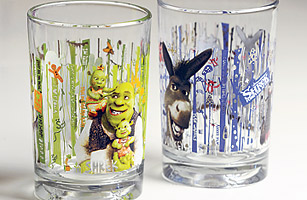
Over the past six years, The Consumer Product Safety Commission has recalled more than 180 million pieces of metal jewelry that contained dangerous levels of lead, and in August 2009 it lowered the acceptable amount of lead in children’s jewelry to 300 parts per million . But the progress in regulating lead appears to have propelled manufacturers to use another toxic metal, cadmium. In January of this year, an Associated Press investigation revealed that many cheap metal pendants and bracelets manufactured in China contained dangerous levels of cadmium — prolonged exposure to which has been shown to cause kidney disease, severe bone loss and even lung cancer — with many products consisting of 84% to 90% cadmium. Since that report, the CPSC has issued three recalls for jewelry items, all of which were marketed to young children and cost $1 to $12. McDonald’s recently announced a recall of 12 million Shrek-themed glasses after an anonymous tip to a California congresswoman resulted in tests showing that they contained cadmium. The CPSC can regulate emerging threats in consumer products under authority granted by the Federal Hazardous Substances Act, but the growing prevalence of products tainted with cadmium, in particular, spurred the commission to study safe levels of exposure, with the aim of setting a standard for acceptable levels. The study is under way, and CPSC spokesman Alex Filip says the results should be available by the end of the summer. Until the new cadmium limits are set, manufacturers may be erring on the side of caution. The McDonald’s glasses meet all current regulatory standards, but by the end of the summer, that’s not likely to be the case. What is the risk posed by cadmium exposure? According to Bruce Fowler of the Agency for Toxic Substances and Disease Registry’s division of toxicology and environmental medicine, cadmium on the outside of a glass would be unlikely to cause harm unless, for example, the glass was repeatedly washed in a dishwasher and the metal got onto other dishes, from which it could be ingested. For jewelry, which small children are prone to put in their mouths, the threat may be more significant. While the ongoing CPSC study will analyze lower levels of exposure, the latest research focuses on long-term exposure. On the basis of the evidence available, Fowler suggests that in metal jewelry, at least, cadmium is less immediately toxic than lead, a softer metal that breaks down more easily when exposed to stomach acid; while ingesting cadmium would probably result in serious illness involving diarrhea and vomiting, it’s not likely to be deadly so quickly. If there is a silver lining to this toxic-metal mess, it’s that cadmium isn’t likely to cause as great a public-health crisis as lead, primarily because its use is not as widespread. The CPSC’s Filip puts it this way: “We’re not looking at another lead story. Cadmium won’t be anywhere near the kind of problem that we saw with lead.” See TIME’s Pictures of the Week.
See the Cartoons of the Week.